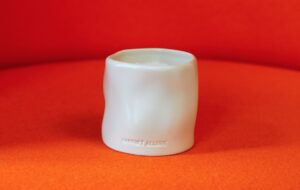
words Marcus Fairs
Deyan Sudjic has the most impressive CV of any design critic – founding editor of Blueprint magazine, former editor of Domus and director of the 2002 Venice architecture biennale are just a few of his achievements.
Now he is about to take over from the Design Museum’s controversial director Alice Rawsthorn. As he gears up to oversee the museum’s move to new premises beside Tate Modern in 2012, Sudjic tells icon a few of his ambitions for it.
“There’s no point in setting out to make the world’s second most interesting design museum, is there? Why else would one be doing it? Museums need to be noticed, they need to be talked about, and I think the Design Museum has done that very well.
As far as how design is displayed in museums, this is a conversation that has been going on for 30 years. When Stephen Bayley first started the Design Museum, he was saying it’s not enough to show design that you might find in a shop; you need to find other ways of doing it. And of course he’s right. It’s interesting how often people find the process more interesting than the object. When I was editing Domus, we did a piece about Jasper Morrison’s Air Chair and we went and photographed the tooling: massive, beautifully cast pieces of steel. As objects, they are actually more powerful than the pieces they make.
I think the point of the museum is to be a focus for lots of very bright people who want to use it as a place to demonstrate their thinking and explore ideas. To do that, you need to have a certain amount of credibility, which is what a collection is for, and enough resources to give people a rich, different kind of experience.
The thing that really strikes you about contemporary art – which is getting much bigger audiences than any other cultural event at the moment – is that it is a very undemanding experience. You can walk into the Turbine Hall [at Tate Modern] and there is a fantastic sense of spectacle. It allows people to go in, feel good, get something out of it without having to work at the experience in the same way as someone going to the Science Museum, for example. I think we need to think about what that means for design.
Architecture has always been part of the mission of the Design Museum. It’s there in black and white. Architecture has been around longer, and it’s got more literature, and it’s got a greater weight. Design has always been a commercial art. But I don’t think design is any less significant in comparison. I think it’s wrong to say yuk, commerce, dirty nasty stuff – absolutely wrong.”

















